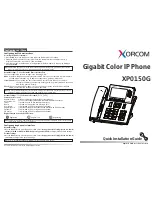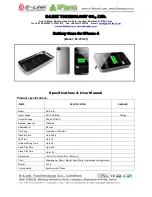
Safety and usage information
105
15 of the FCC Rules. These limits are designed to provide
reasonable protection against harmful interference in a
residential installation. This equipment generates, uses and
can radiate radio frequency energy and, if not installed and
used in accordance with the instructions, may cause harmful
interference to radio communications. However, there is
no guarantee that interference will not occur in a particular
installation; if this equipment does cause harmful interference
to radio or television reception, which can be determined by
turning the equipment off and on, the user is encouraged to
try to correct the interference by one or more of the following
measures:
• Reorient / relocate the receiving antenna.
• Increase the separation between the equipment and receiver.
• Connect the equipment into an outlet on a circuit different
from that to which the receiver is connected.
Consult your dealer or an experienced radio/TV technician for
help.
Specific Absorption Rate (SAR)
The SAR is a value that corresponds to the relative amount of
RF energy absorbed in the head of a user of a wireless handset.
Radio frequency safety
The design of your phone complies with updated NCRP
standards described below. In 1991-92, the Institute of
Electrical and Electronics Engineers (IEEE) and the American
National Standards Institute (ANSI) joined in updating
ANSI’s 1982 standard for safety levels with respect to human
exposure to RF signals. More than 120 scientists, engineers
and physicians from universities, government health agencies
and industries developed this updated standard after
reviewing the available body of research. In 1993, the Federal
Communications Commission (FCC) adopted this updated
standard in a regulation. In August 1996, the FCC adopted
hybrid standard consisting of the existing ANSI/IEEE standard
and the guidelines published by the National Council of
Radiation Protection and Measurements (NCRP).
Acknowledging special precautions and
Industry Canada notice
This equipment has been tested and found to comply
with the limits of a Class B digital device, pursuant to Part










































